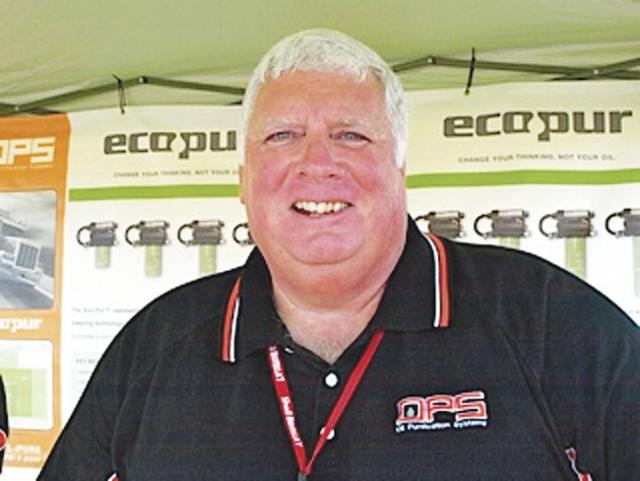Understanding Oil Contaminants

Over the past few months I received some questions I thought you might find interesting:
<!-- /* Font Definitions */ @font-face {font-family:"Cambria Math"; panose-1:2 4 5 3 5 4 6 3 2 4; mso-font-charset:0; mso-generic-font-family:roman; mso-font-pitch:variable; mso-font-signature:-536870145 1107305727 0 0 415 0;} @font-face {font-family:Calibri; panose-1:2 15 5 2 2 2 4 3 2 4; mso-font-charset:0; mso-generic-font-family:swiss; mso-font-pitch:variable; mso-font-signature:-536859905 -1073732485 9 0 511 0;} @font-face {font-family:"ITC Clearface"; panose-1:2 11 6 4 2 2 2 2 2 4; mso-font-alt:Calibri; mso-font-charset:0; mso-generic-font-family:auto; mso-font-format:other; mso-font-pitch:variable; mso-font-signature:3 0 0 0 1 0;} /* Style Definitions */ p.MsoNormal, li.MsoNormal, div.MsoNormal {mso-style-unhide:no; mso-style-qformat:yes; mso-style-parent:""; margin-top:0in; margin-right:0in; margin-bottom:10.0pt; margin-left:0in; line-height:115%; mso-pagination:widow-orphan; font-size:11.0pt; font-family:"Calibri",sans-serif; mso-ascii-font-family:Calibri; mso-ascii-theme-font:minor-latin; mso-fareast-font-family:Calibri; mso-fareast-theme-font:minor-latin; mso-hansi-font-family:Calibri; mso-hansi-theme-font:minor-latin; mso-bidi-font-family:"Times New Roman"; mso-bidi-theme-font:minor-bidi;} a:link, span.MsoHyperlink {mso-style-priority:99; color:#0563C1; mso-themecolor:hyperlink; text-decoration:underline; text-underline:single;} a:visited, span.MsoHyperlinkFollowed {mso-style-noshow:yes; mso-style-priority:99; color:#954F72; mso-themecolor:followedhyperlink; text-decoration:underline; text-underline:single;} .MsoChpDefault {mso-style-type:export-only; mso-default-props:yes; font-family:"Calibri",sans-serif; mso-ascii-font-family:Calibri; mso-ascii-theme-font:minor-latin; mso-fareast-font-family:Calibri; mso-fareast-theme-font:minor-latin; mso-hansi-font-family:Calibri; mso-hansi-theme-font:minor-latin; mso-bidi-font-family:"Times New Roman"; mso-bidi-theme-font:minor-bidi;} @page WordSection1 {size:8.5in 11.0in; margin:1.0in 1.0in 1.0in 1.0in; mso-header-margin:.5in; mso-footer-margin:.5in; mso-paper-source:0;} div.WordSection1 {page:WordSection1;} -->What physical
property levels require the oil to be changed?
The general rule is an increase or decrease of one viscosity grade,
antifreeze contamination, TBN (Total Base Number) below 2.8, excessive
oxidation or nitration, excessive silicon (sand/dirt) in oil. The viscosity
increases with higher soot levels, oil overheating and antifreeze intrusion.
The viscosity decreases with fuel and water dilution. The oxidation and
nitration are usually caused by heat and/or back pressure due to exhaust
restriction. The TBN is affected by heat and usage time as well as acid
production. The sand and dirt usually enter the engine through air intake leaks
or clogged air filters. Keeping oil
levels correct will help to reduce heat related issues and a by-pass system
will control acid levels, remove solid contaminants and extend useful oil life.
Why does the TBN
drop so fast? If new lube TBN is 8.5 why does it drop to half that number after
one sample? The Total Base Number (TBN)
measures the alkaline content present in the oil. The base consists of alkali –
primarily calcium and magnesium that are antacids to neutralize acids as they
develop. The calcium and magnesium lose
some potency as the encounter the heat of the engine oil. Think of your
medication that should be kept cool and dry to be effective. Heat causes
reactions that reduce potency causing the drop in TBN. The oil manufacturers place enough base materials
to protect the engine from the acidic corrosion. Oil manufacturers recommend the oil be
changed when TBN reaches 20% of starting TBN. OPS recommend not dropping TBN
below 2.8 to ensure sufficient base is available. The base will last longer if the oil is not
overheated and acid was prevented from forming with the use of by-pass
filtration systems that reduce levels of condensation water in oil.
Will the filters
that have TBN enhancers increase my TBN levels? The oil sample results show
increased levels of calcium and magnesium with slightly higher TBN levels. If
the filters are cost effective for your operation, I would recommend them.
The oil sample
company usually sends me my results via email, but it doesn’t show the history
of my last two reports? This happens
when the sample is submitted without a component or unit number or the name is
changed requiring establishment of a new account. For example, if you typically
enter Bob Jones Trucking, then change to BJs Trucking, chances are the data
entry person would not match the two and start a new account. If the email
address is not entered on the sample form or is illegible, then no email will
be sent. Not recording any unit # would show up as unknown and an email would
not be sent nor would historical data be included on the report. The general
rule is garbage in, equals garbage out.
Is it true that
you can go 100,000 miles between oil changes? I must answer this question
hundreds of times each month. YES, if you use a by-pass system that removes
solid and liquid contaminants. If you stop by OPS Booth 68216 at The
Mid-America Truck Show I’m sure there will be someone using the OPS EcoPur
system more than willing to share their experience with 100K, 200K and 300K oil
change intervals.
Don’t forget to
mark your calendar for The Mid-America Truck Show March 28-30 in Louisville KY.
You can register for free admission at:
https://www.truckingshow.com/registration
If you have any
questions or topic recommendations for this column, please email me at: [email protected]
